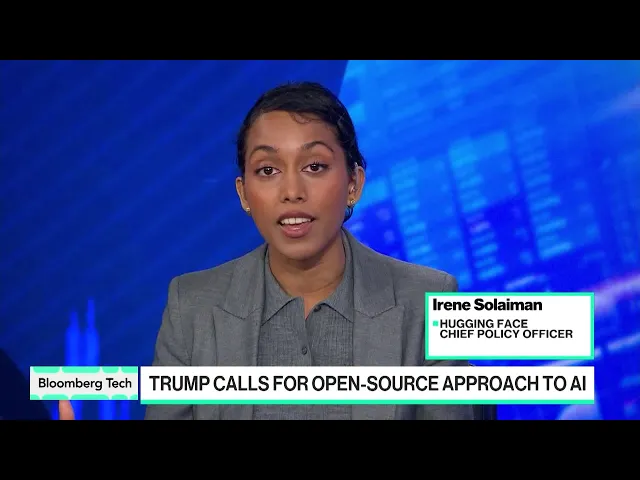US AI Policy Centers on Open-Source and Open-Weight

US open-source ai push reshapes tech landscape
In a significant policy shift that could redefine America's technological competitiveness, the Biden administration has articulated a clear stance favoring open-source AI development as part of its national strategy. This approach, emphasizing transparency and collaborative innovation, represents a deliberate counterbalance to China's more centralized AI ambitions. The implications for businesses, developers, and the global AI ecosystem are profound and far-reaching.
The administration's focus on open-source and open-weights models signals a belief that distributed innovation—rather than concentrated control—will accelerate American leadership in artificial intelligence. This policy direction isn't merely theoretical; it's backed by concrete investments and infrastructure support designed to democratize access to the computational resources needed for cutting-edge AI research. Most notably, the National AI Research Resource (NAIRR) pilot program aims to provide academic and independent researchers with the computing power traditionally available only to tech giants and well-funded institutions.
Key aspects of the US approach:
-
Strategic open-source advocacy – The administration views open-source AI as both an innovation accelerator and a democratic counterweight to centralized AI development models employed by competitors like China.
-
Computational infrastructure investment – Through programs like NAIRR, the government is addressing the resource imbalance that has traditionally favored large corporations in AI research.
-
Balanced regulation framework – Rather than imposing heavy regulatory constraints, the administration seeks a middle path that encourages innovation while establishing guardrails for responsible development.
-
International alliance building – The US is actively engaging partners through forums like the Global Partnership on AI to establish shared principles and practices around open-source AI development.
-
Talent development pipeline – A comprehensive strategy to enhance domestic AI expertise through education initiatives and research support.
The democratization dividend
The most transformative aspect of this approach may be its potential to democratize AI development. By removing computational barriers to entry, the US strategy could unleash innovation from unexpected quarters—small businesses, academic institutions, and independent researchers who previously couldn't compete with tech giants' resources. This represents a philosophical bet that distributed innovation will outpace centralized models in the long run.
This matters tremendously in the current technological moment. As AI capabilities advance rapidly, the question of who shapes these technologies—and whose values they emb
Recent Videos
How To Earn MONEY With Images (No Bullsh*t)
Smart earnings from your image collection In today's digital economy, passive income streams have become increasingly accessible to creators with various skill sets. A recent YouTube video cuts through the hype to explore legitimate ways photographers, designers, and even casual smartphone users can monetize their image collections. The strategies outlined don't rely on unrealistic promises or complicated schemes—instead, they focus on established marketplaces with proven revenue potential for image creators. Key Points Stock photography platforms like Shutterstock, Adobe Stock, and Getty Images remain viable income sources when you understand their specific requirements and optimize your submissions accordingly. Specialized marketplaces focusing...
Oct 3, 2025New SHAPE SHIFTING AI Robot Is Freaking People Out
Liquid robots will change everything In the quiet labs of Carnegie Mellon University, scientists have created something that feels plucked from science fiction—a magnetic slime robot that can transform between liquid and solid states, slipping through tight spaces before reassembling on the other side. This technology, showcased in a recent YouTube video, represents a significant leap beyond traditional robotics into a realm where machines mimic not just animal movements, but their fundamental physical properties. While the internet might be buzzing with dystopian concerns about "shape-shifting terminators," the reality offers far more promising applications that could revolutionize medicine, rescue operations, and...
Oct 3, 2025How To Do Homeless AI Tiktok Trend (Tiktok Homeless AI Tutorial)
AI homeless trend raises ethical concerns In an era where social media trends evolve faster than we can comprehend them, TikTok's "homeless AI" trend has sparked both creative engagement and serious ethical questions. The trend, which involves using AI to transform ordinary photos into images depicting homelessness, has rapidly gained traction across the platform, with creators eagerly jumping on board to showcase their digital transformations. While the technical process is relatively straightforward, the implications of digitally "becoming homeless" for entertainment deserve careful consideration. The video tutorial provides a step-by-step guide on creating these AI-generated images, explaining how users can transform...
